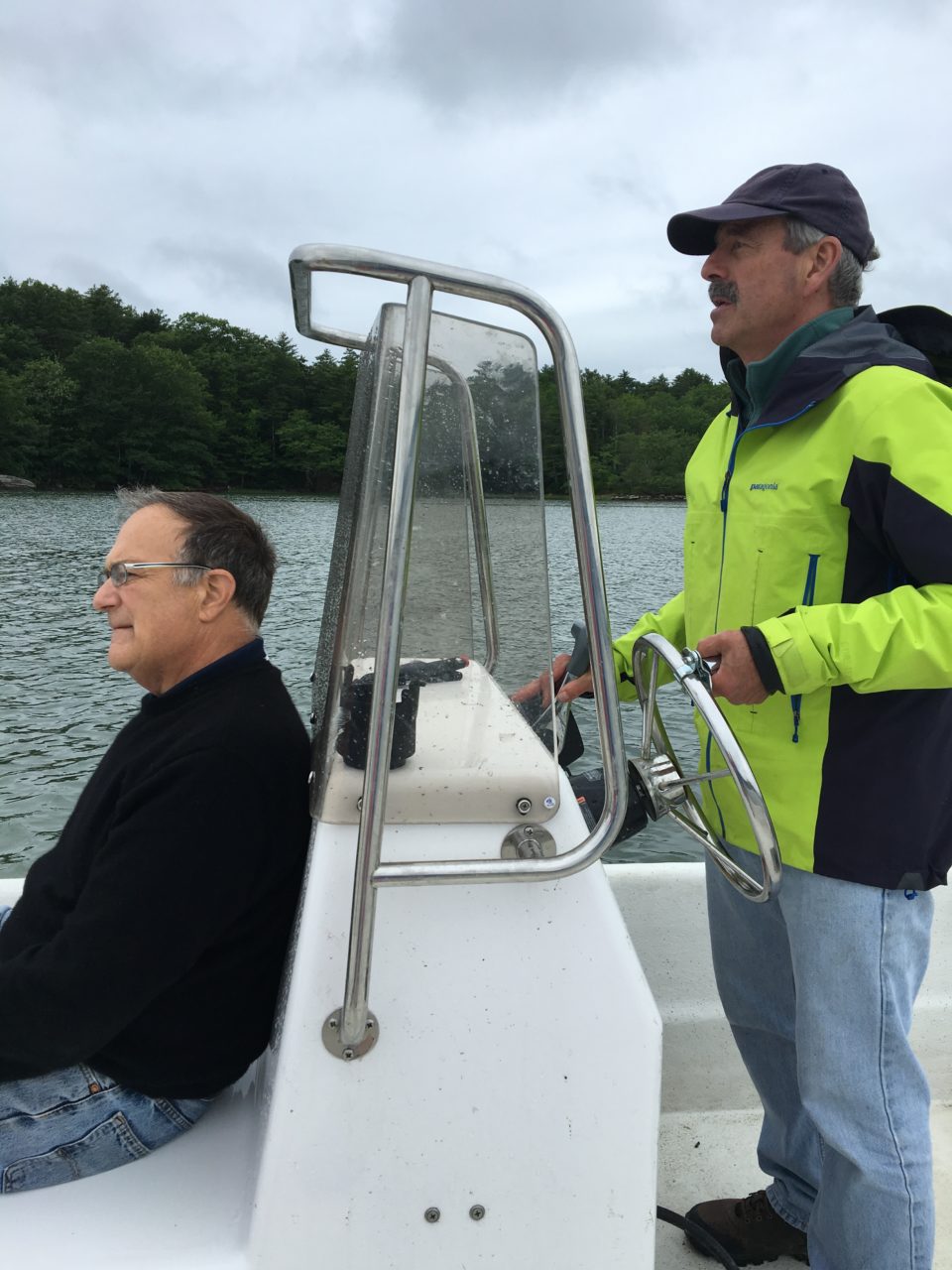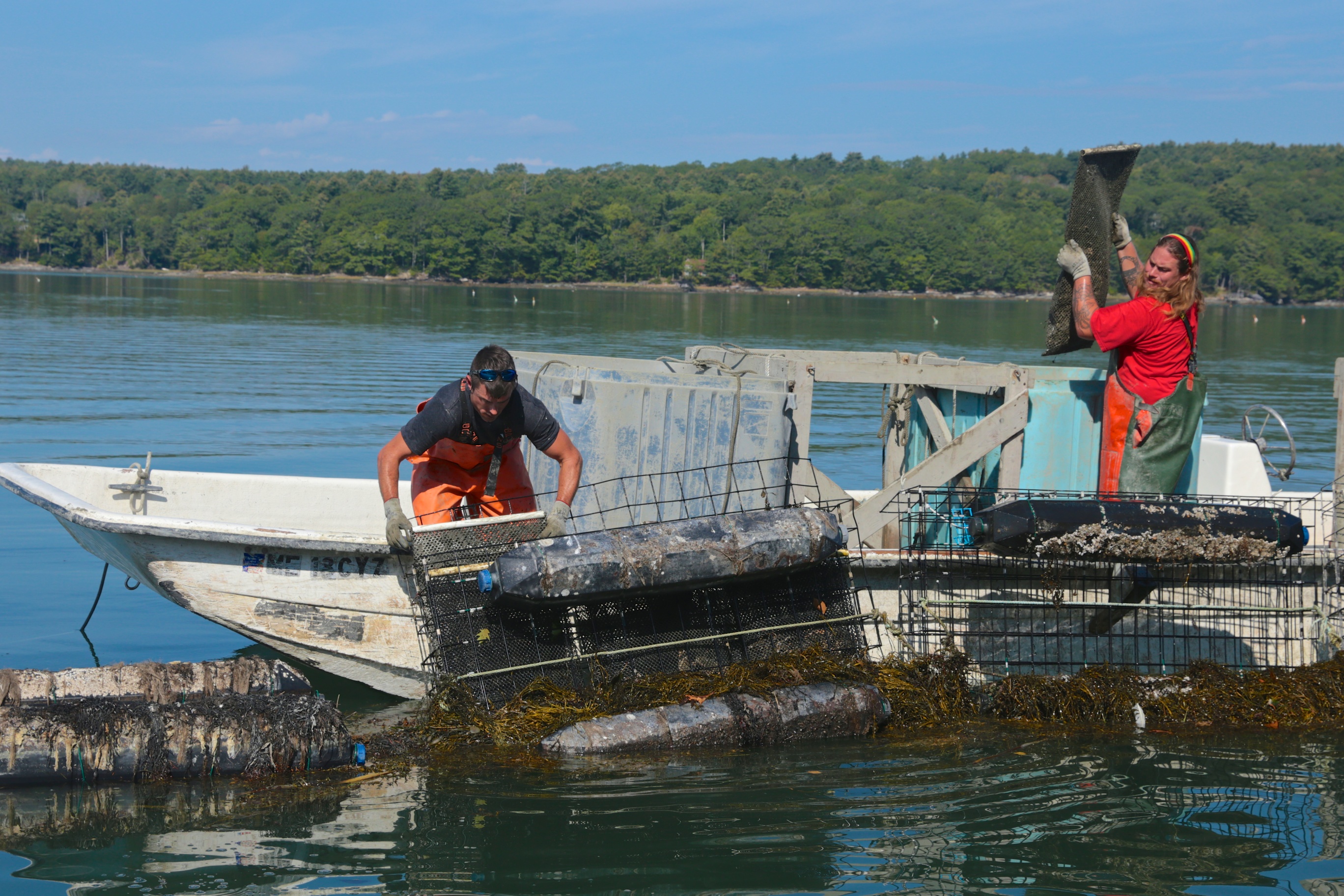The More You NOAA: What the Trump Budget Cuts Mean for Maine’s Oyster Business
Published by Ocean Conservancy
Bill Mook started Mook Sea Farm in 1985 after attending the University of Maine as an oceanography graduate student. Situated on the banks of the Damariscotta River in Maine, Mook Sea Farm grew American oysters for the half shell market and supplied seed clams, scallops and oysters to other East Coast shellfish farmers. Today, their hatchery produces only American oysters (more than 120 million juveniles annually). While they still sell oyster seed, market oyster sales now represent the greatest part of their business.
In addition to being a leader in the shellfish industry, Bill Mook is also a staunch water quality champion and a vocal advocate for ocean acidification mitigation strategies. Along with helping to form a citizen’s water quality monitoring group for the Damariscotta River (which eventually expanded to much of Maine’s coast), he’s also spearheaded several research projects that assess the impacts of ocean acidification on his shellfish business.
However, the federal agency that funds these important research projects, the National Oceanic and Atmospheric Administration (NOAA) is currently under threat. In February, the Trump Administration proposed over $1 billion in cuts to NOAA for fiscal year 2019, nearly 20% of the agencies entire operating budget. This would affect American businesses across the nation that, like Mook Sea Farm, rely on NOAA funding to support their livelihood.
I had a chance to speak with Bill Mook to talk about Mook Sea Farm, what cuts to NOAA would mean for his business and what the ocean means to him.


Emi Okikawa: What made you first aware of the effects of ocean acidification?
Bill Mook: In 2009, we were experiencing great difficulty growing our larvae. We lost a few batches, but mostly we observed that a cohort would suddenly stop feeding and we’d have to do series of water changes and coax them back to health.
Often times, instead of the normal 14 days to go through the larval cycle, it could take anywhere from 18 to 28 days. That put a big pinch on our production because when that happens a couple times, it represents an entire spawn which equates to a loss of 15 million oysters seeds.
We began to connect the dots to ocean acidification after meeting with some West Coast hatchery operators who described the problems they had experienced and how they figured out that they were caused by changing carbonate chemistry.
Okikawa: How is NOAA important to the work that you do?
Mook: NOAA provides information we use on a regular basis. Every morning when I wake up, I listen to the NOAA buoy reports and the NOAA weather forecast. Our business is very dependent on accurate weather information.
We also benefit from the Sea Grant programs, because they fund some of our research and development projects. I think that leads into what I see as the longer term of value of NOAA, which is helping us to understand some of the changes that we see taking place in our natural environment.
We appreciate NOAA funding work on ocean acidification. Through funded research, NOAA provides information that we’ll be able to use to plan our future and try to understand what changes we’re facing. NOAA is a very important part of getting all those answers.
Okikawa: Why was it important to you to come to Washington D.C. in March to meet with lawmakers and get to tell your story?
Mook: Well, the president’s budget proposed a one-billion-dollar cut to a five-billion-dollar budget. And given how important NOAA is to not just us, but everyone in the fisheries industry, we just thought that this was not a sustainable budget. It would really just gut key programs and leave us at a competitive disadvantage worldwide and really negatively impact our prospects for continuing to grow and improve our businesses. We believe that accurate information is key to our resiliency in the face of rapidly changing environmental conditions.
In my case, coming from Maine, there is a very large and strong support for NOAA. Senator Angus King, Senator Susan Collins and Congresswoman Chellie Pingree are completely and totally on board. So, my goal coming down there was not so much to influence them to change their views or to impress upon them the importance of NOAA, but rather to provide them with stories that they could use to convince their colleagues to make sure that NOAA stays funded.


Okikawa: What were some of those stories you wanted to highlight for lawmakers to better understand the impacts?
Mook: Those of us producing food from the sea are not just providing healthy and sustainably grown food. We are important to the fabric of small coastal communities that are emblematic of an American way of life that people treasure. The rapidly changing climate is already costing us and poses a serious threat to our future. Agencies like NOAA are crucial to our ability to understand what’s happening with these environmental changes
If you look at the precipitation data over a 50-year period, there’s been more than a 70 percent increase in very heavy precipitation events in the northeast. That has a very direct impact on us. For example, when there’s more than two inches of rainfall in 24 hours, the state of Maine closes down the impacted areas until they can test the waters to ensure they are clean and that there are no bacterial contamination issues. During that time, which can be up to a week, we can’t harvest or ship our products. That’s lost revenue.
Another impact of a severe weather event is that ocean acidification is exacerbated during times of heavy runoff. When you get big precipitation events you also get an influx of fresh water. At least for us, on the Damariscotta River, runoff is as important a factor in ocean acidification as the amount of carbon dioxide from the atmosphere because (among other things) freshwater runoff is more acidic than seawater. I see NOAA as being the logical place where those kinds of problems are researched to find solutions.
Okikawa: And lastly, why is the ocean important to you?
Mook: Well, it’s the lifeblood of my business. It’s my livelihood. M y business totally and completely depends on having a good healthy marine environment.
I could not do what we’re doing if we didn’t have clean water. Simple as that.
*To see other stories about why NOAA funding is important click here
Sign up for our emails!
The post The More You NOAA: What the Trump Budget Cuts Mean for Maine’s Oyster Business appeared first on Ocean Conservancy.
Read the full article at: https://oceanconservancy.org/blog/2018/06/19/noaa-trump-budget-cuts-mean-maines-oyster-business/


